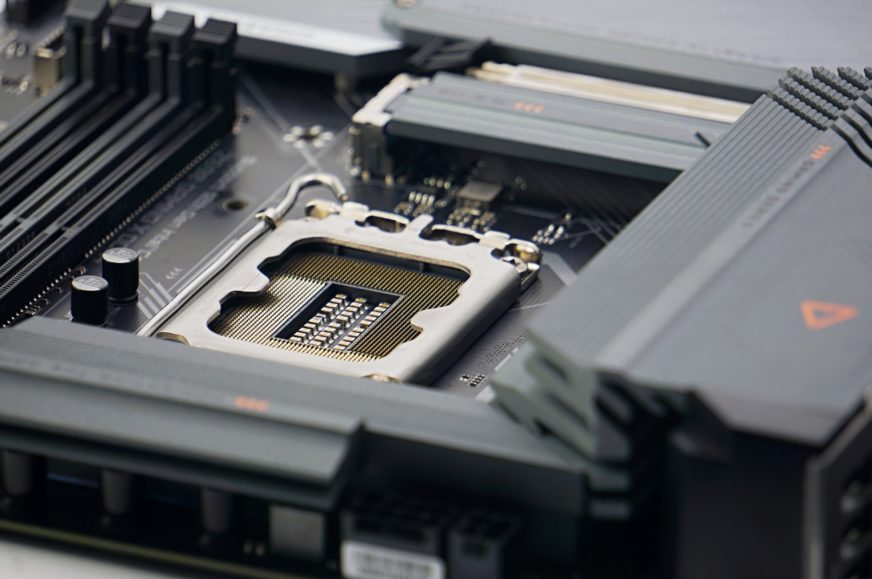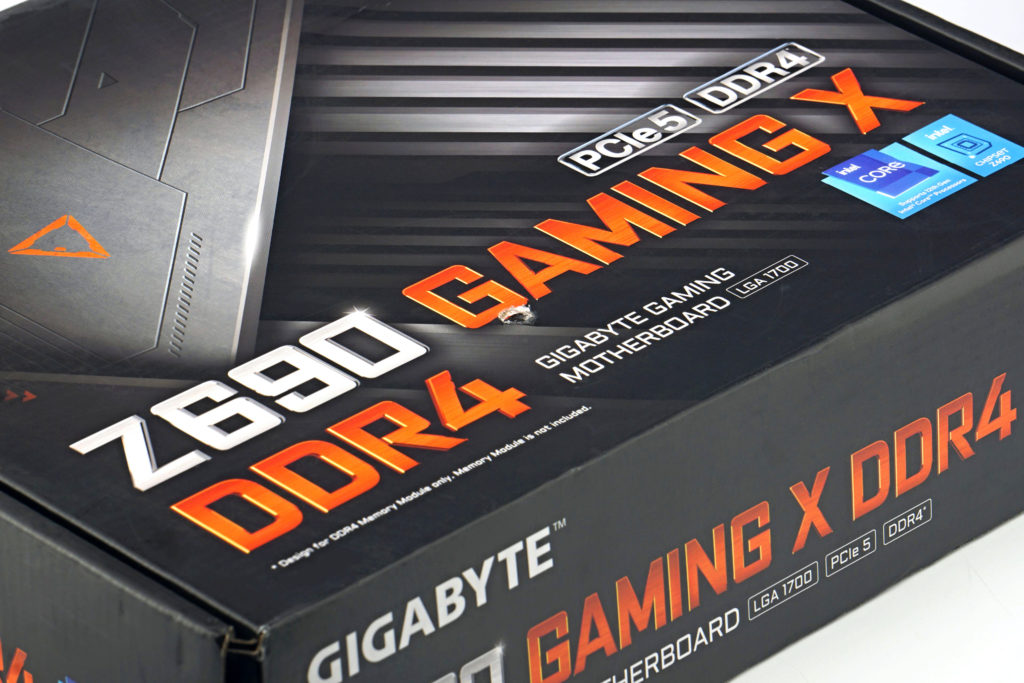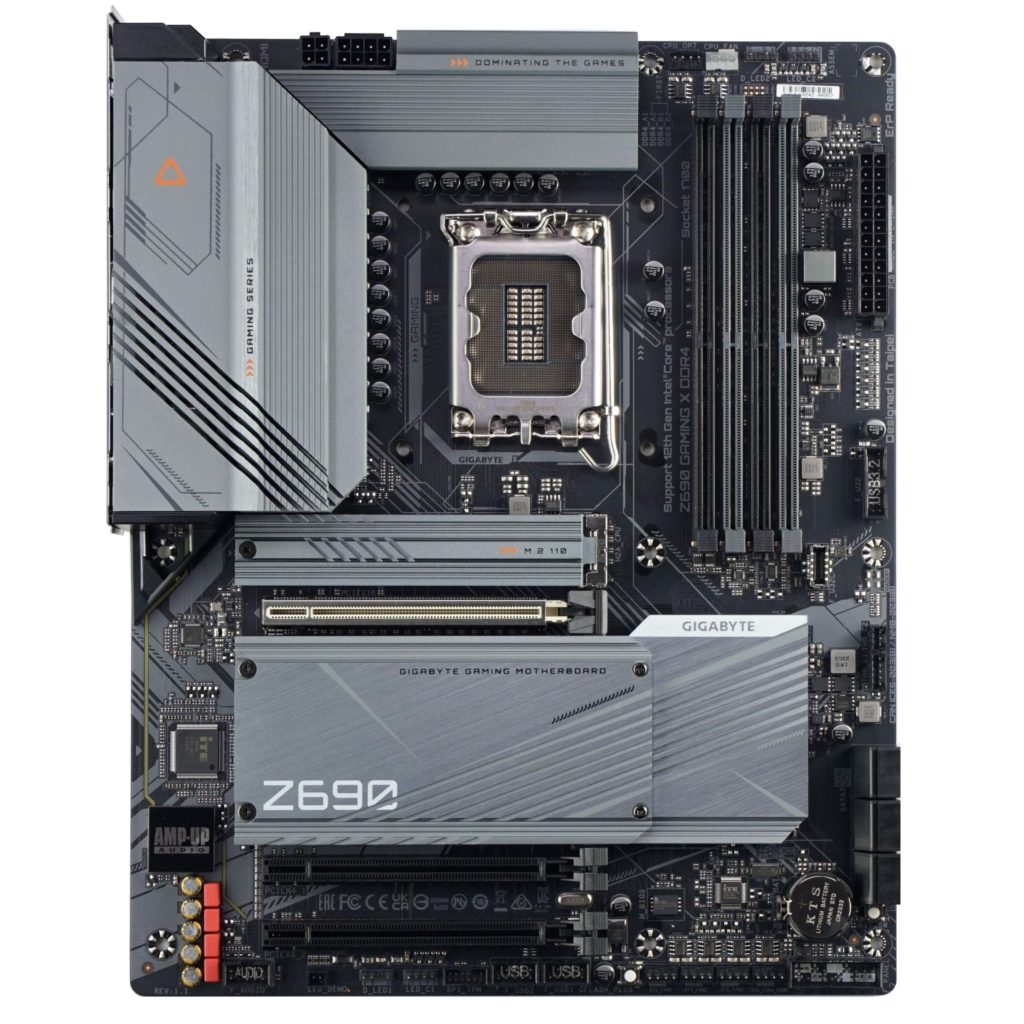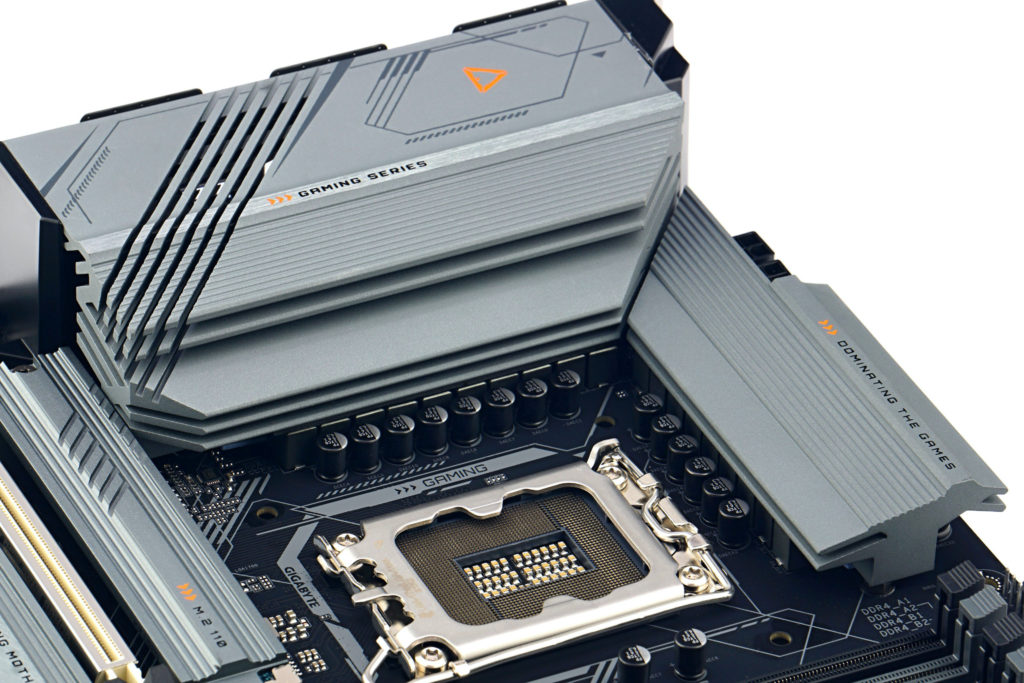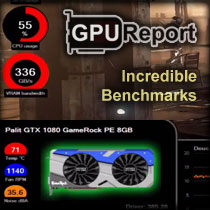Gigabyte Z690 Gaming X DDR4 in detail
Here we have a test of the latest motherboard, which is designed primarily for the needs of Intel Alder Lake processors. It is also compatible with Raptor Lakes, but most importantly we finally have a tough opponent for the MSI Pro Z690-A DDR4. That board has set the bar really high among the cheaper models. But Gigabyte also has one ace up its sleeve in the low-end segment. The Z690 Gaming X DDR4 motherboard is truly a class act!
The Z690 Gaming X DDR4 is one of the best-selling Intel LGA 1700 motherboards Gigabyte has to offer. The reason for this is mainly due to the lower price while still packing a lot of features. And know that this is no cliché. This motherboard definitely doesn’t give off a low-budget impression, and what’s more, it doesn’t “skimp” on the Core i9 class “K” processors either, quite the opposite. It takes a bold approach to the most powerful Z690 Gaming X DDR4 processors, and at times we honestly were puzzled as to how confident it is with them.
| Parameters | Gigabyte Z690 Gaming X DDR4 (rev. 1.1) | |
| Socket | Intel LGA 1700 | |
| Chipset | Intel Z690 | |
| Format | ATX (305 × 244 mm) | |
| CPU power delivery | 19-phase | |
| Supported memory (and max. frequency) | DDR4 (5333 MHz) | |
| Slots PCIe ×16 (+ PCIe ×1) | 3× (+ 0×) | |
| Centre of socket to first PCIe ×16 slot | 90 mm | |
| Centre of socket to first DIMM slot | 56 mm | |
| Storage connectors | 6× SATA III, 4× M.2 (42–110 mm): 3× PCIe 4.0 ×4 + 1× PCIe 4.0 ×4/SATA III | |
| PWM connectors for fans or AIO pump | 6× | |
| Internal USB ports | 1× 3.2 gen. 2 type C, 2× 3.2 gen. 1 type A, 4× 2.0 typ A | |
| Other internal connectors | 1× TPM, 2× ARGB LED (5 V), 2× RGB LED (12 V), 2× Thunderbolt (add-in card), 1× jumper Clear CMOS | |
| POST display | no (but has debug LED) | |
| Buttons | reset, Q-Flash | |
| External USB ports | 1× 3.2 gen. 2×2 type C, 2× 3.2 gen. 2 type A, 3× 3.2 gen. 2 type A, 4× 2.0 type A | |
| Video outputs | 1× HDMI 2.1, 1× DisplayPort 1.2 | |
| Network | 1× RJ-45 (2,5 GbE) – Realtek RTL8125B | |
| Audio | Realtek ALC1220-VB (7.1) | |
| Other external connectors | – | |
| Approximate retail price | 221 EUR |
Gigabyte Z690 Gaming X DDR4 (rev. 1.1)
This is Gigabyte’s cheapest motherboard that has “Gaming” in the designation. Below the Z690 Gaming X DDR4 are only “UD” (Ultra Durable) boards and low-end models more suited for more low-power processors with a TDP of 65 W. But the Z690 Gaming X DDR4 is still a properly robust board, in more ways than one.
Price-wise, the Z690 Gaming X DDR4 is in the same category as the MSI Pro Z690-A DDR4, but it’s closer to the more expensive MSI MAG Z690 Tomahawk DDR4 in many ways when it comes to features.
First of all, it should be noted that this is an ATX-format board – the dimensions (305 × 244 mm) are therefore quite usual. At a price of around 220 EUR, the Z690 Gaming X DDR4 board clearly stands out because of its massive VRM and SSD heatsinks. From this comparison, the MSI Pro Z690-A DDR4 comes out rather poor and yet this (robust cooling) is definitely not due to a weaker power delivery that would need more intensive cooling. The power delivery here is robust, with 19 phases (16 of which are for the CPU). Rather than comparing it to the Pro Z690-A, a comparison with the Tomahawk Z690 DDR4 board is again suggested here, which is some 50–70 EUR more expensive depending on the store.
The VRM heatsinks have a total weight of 397 g (123 + 274 g) and are in contact with the Renesas ILS99390 voltage regulators via thermal pads. And get this, the Asus ROG Maximus Z690 Hero, a 700-euro motherboard, has its power delivery built on those as well. Still, it is true that the Gigabyte Z690 Gaming X DDR4 has fewer phases and the total current load is lower. But even so, it’s 1440 (Vcore) to 1710 A. The PWM controller is also from Renesas – the RAA229130. The VRM is well above standard, even extreme, considering where the board is priced.
The layout of the M.2 SSD slots is also unusual. One is standard above the first PCI Express ×16 slot (which, by the way, supports the speeds of the fifth generation of this interface) and the remaining three are below it. And it’s important to emphasize that they are there one after the other. The gap between the first and second PCIe ×16 slot is 75 mm, in which there are three M.2 slots supporting SSDs up to 110 mm. This arrangement has two advantages right away. Firstly, the fact that all three SSDs have a huge shared heatsink weighing 112 g and in case you only use one position, you don’t really have to worry about the SSD temperatures. Although the heatsink is not that articulated, it still has a large surface area. And the other advantage of this slot layout is that using very tall graphics cards won’t take away the extra PCI Express ×16 slots.
A bit of a disadvantage is that the two bottom PCI ×16 slots are close to the edge of the PCB, just above each other, but this won’t matter so much in practice. Both are in fact four-lane and count on single-slot devices, which usually have lower performance and thus don’t have big demands on cooling (and don’t mind the closer contact with possibly worse airflow).
The board has fewer fan and pump connectors than you might expect – “only” six (even some cheaper boards have as many as 7–8). So in case you need to plug in more fans, you will need a hub. On the other hand, what’s nice is that there is up to six SATA connectors for connecting inch storage. Too bad there’s not a pair of internal USB 3.1 gen. 1 connectors. After all, several cases have four 5-gigabit USB connectors on the front panel, and with this board, half will remain unconnected (that is, unless you expand the board with an additional USB controller card).
The selection of external connectors is rich. There are up to ten USB ports, three of which are very fast, two of the 3.2 gen. 2 standard (with 10 Gbps) and one (type C) 3.2 gen. 2×2 (with a theoretical bandwidth of 20 Gbps). Three are then 5-gigabit (USB 3.2 gen. 1) and four of the 2.0 standard for connecting slower devices, typically peripherals (keyboard, mouse, headset, printer… whatever). The R-45 Ethernet connector has a Realtek RTL8125B 2.5 Gb adapter in front of it, and Gigabyte didn’t skimp on the audio chip either, using a more solid Realtek ALC1220(-VB) in circuit with renowned WIMA “audio” capacitors and a headphone amplifier.
Following the sound equipment, only the jack lineup is stripped down. These are only two instead of five (but in a configuration with S/PDIF optical output, which is unusual), line out/stereo and microphone. This is probably also in view of the fact that few people connect a home theatre with satellites and subwoofer in dedicated jacks to computers like the ones this board is expected to be in. And if it works out to similar money this way as using a cheaper codec, then it can be seen as a more practical solution.
- Contents
- Gigabyte Z690 Gaming X DDR4 in detail
- What it looks like in the BIOS
- Methodology: Performance tests
- Methodology: How we measure power draw
- Methodology: Temperature and frequency measurements
- Test setup
- 3DMark
- Borderlands 3
- F1 2020
- Metro Exodus
- Shadow of the Tomb Raider
- Total War Saga: Troy
- PCMark and Geekbench
- Web performance
- 3D rendering: Cinebench, Blender, ...
- Video 1/2: Adobe Premiere Pro
- Video 2/2: DaVinci Resolve Studio
- Graphics effects: Adobe After Effects
- Video encoding
- Audio encoding
- Photos: Adobe Photoshop, Affinity Photo, ...
- (De)compression
- (De)cryption
- Numerical computing
- Simulations
- Memory and cache tests
- M.2 (SSD) slots speed
- USB ports speed
- Ethernet speed
- Power draw curve (EPS + ATX connector) w/o power limits
- Power draw curve (EPS + ATX connector) w/ Intel’s power limits
- Total power draw (EPS + ATX connector)
- Achieved CPU clock speed
- CPU temperatures
- VRM temperatures – thermovision of Vcore and SOC
- SSD temperatures
- Chipset temperatures (south bridge)
- Conclusion





